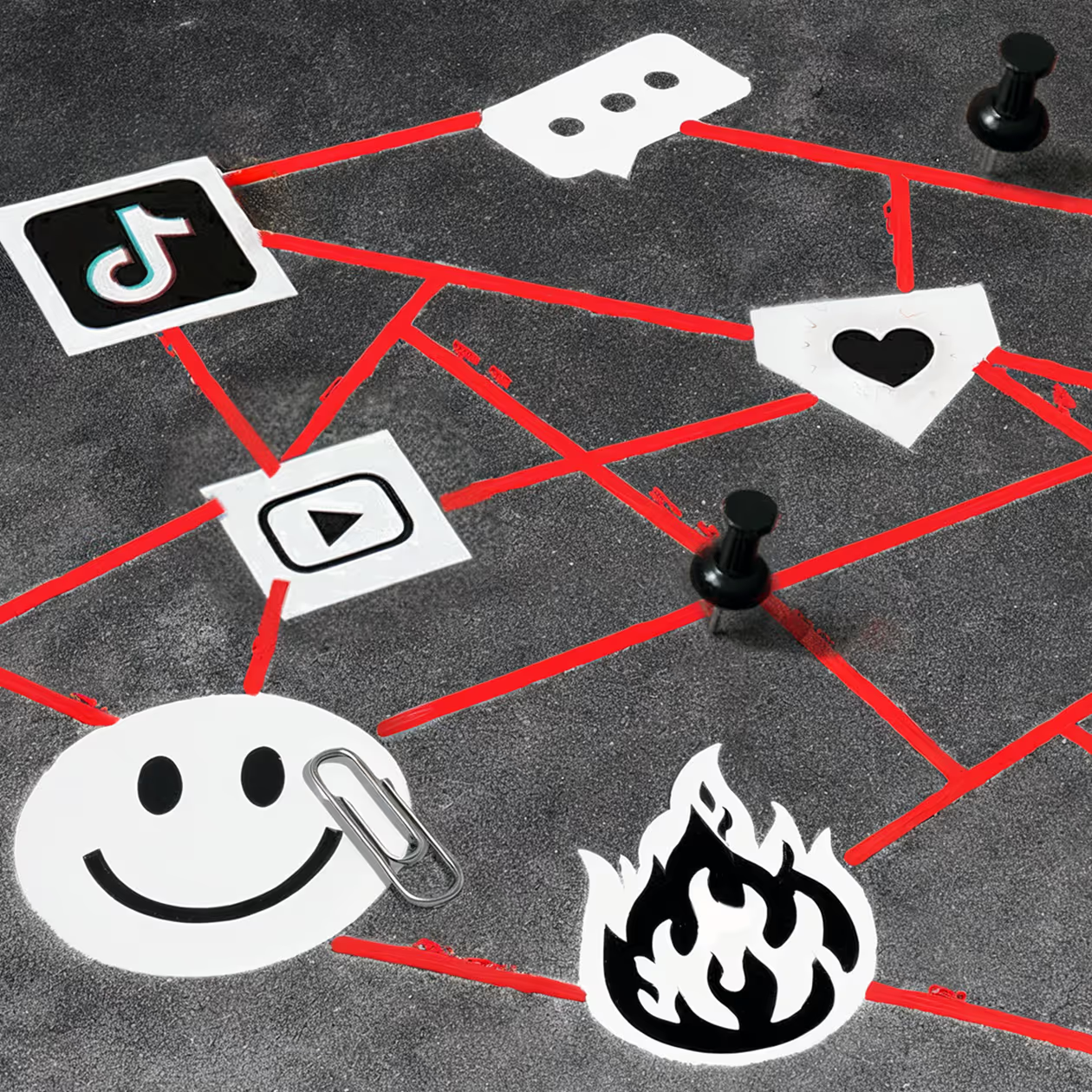CRIMINAL INVESTIGATION REPORT: THE GLEEFUL DEATH OF TRADITIONAL MARKETING

CRIMINAL INVESTIGATION REPORT: THE GLEEFUL DEATH OF TRADITIONAL MARKETING

Deceased Identification
Circumstances of Death
The deceased was discovered face-down in a PowerPoint presentation titled "Leveraging Synergistic Brand Touchpoints for Q4 Consumer Acquisition Optimization."
The body was surrounded by unused focus group reports, $120 swimsuit bottoms still tagged from last season, and what appears to be the remnants of a $50,000 photoshoot featuring models contractually forbidden from smiling or speaking.
Security footage shows the victim's final moments: frantically asking ChatGPT, "What is authenticity?" and "How to be relatable without focus groups."
Time of death coincides precisely with Georgia "Strawberry" Costello hitting 2.2 million followers while selling bikinis for $32 and posting videos of her boyfriend's morning coffee routine.
The victim never saw it coming, probably because they were too busy analyzing demographic penetration metrics to notice that their customers had fled to brands that actually acknowledged their existence.
Suspects
Evidence
The suspect employed psychological warfare tactics previously unknown to marketing science: posting 50 lifestyle videos for every one business post.
Witness testimony reveals she would film herself crying about relationship problems, sharing "reasons I love men" lists, and giving unsolicited dating advice — all while casually wearing products her audience would later purchase, supportively.
Revolutionary.
Forensic analysis confirms that her followers feel a genuine connection to her. They buy bikinis as an afterthought, the way you'd support a friend's lemonade stand, and she makes every effort to reward them with a real connection.
Her victim list continues to grow — brands that had the common decency to charge $50-120 per piece and hire professional models to stand mute in expensive fabric like civilized corporations.
Evidence
In February 2024, the suspect infiltrated JOYRIDE candy company and committed unprecedented acts of marketing terrorism.
Instead of hiring a $200,000 agency to create a 30-second commercial, the suspect made a 5.5-minute YouTube documentary about candy development. The video featured celebrity accomplices, including MrBeast, Haley Pham, and Colin & Samir, achieving 4 million views in 24 hours.
Traditional candy executives immediately experienced acute corporate panic attacks that felt, according to one pin-striped mongrel, “like my 13th heart attack.”
But the suspect's most sadistic innovation? Embedding QR codes in candy packages that trigger SMS conversations asking customers what flavors they want next. Popular requests actually get manufactured.
Meanwhile, candy mega-companies remain trapped in sweaty boardrooms, debating whether their seasonal packaging adequately communicates core brand values to key demographic segments aged 18-34 with household incomes above $50k. And the occasional pissing contest.
Evidence
The most psychologically disturbing case yet. The suspect built a $4.5 million coffee empire from a $1,500 credit card by committing daily acts of conversational violence.
Her weapon of choice? Filming herself asking baristas questions like "What's the weirdest drink order you've gotten lately?" and "What would you make Beyoncé if she walked in?"
That's it. That's the entire marketing strategy: no brand guidelines, no message testing, no demographic analysis. Just a human being talking to other human beings about coffee.
The absolute barbarism.
A crime scene investigation revealed that sales have increased 60% since the videos went viral. The Nitro Bar now has 500,000 TikTok followers and lines stretching around blocks at all three Rhode Island locations.
Customers report traveling from other states to experience what one witness described as "a coffee shop that seems genuinely happy you exist."
Meanwhile, corporate coffee chains deploy armies of consultants to debates about seasonal cup designs and whether their drive-thru experience properly reflects their commitment to authentic community connection.
Autopsy Findings

Physical Evidence
- All suspects possess actual human faces (not focus-group brand personas)
- All document messy, imperfect processes instead of sanitized corporate theater
- All treat audiences like friends rather than conversion targets or "key demographics"
- All operate with minimal corporate infrastructure, maximum personality
- All appear to genuinely enjoy their work (highly suspicious behavior for business owners)

Toxicology Report
Lethal levels of authenticity detected in the deceased's bloodstream. Post-mortem analysis revealed a complete absence of focus group validation, demographic targeting, or corporate approval processes.
The deceased were fatally poisoned by exposure to brands that operated like actual human beings instead of faceless corporate entities optimized for quarterly earnings calls.

Contributing Factors
The victim was severely compromised by decades of hiding behind agencies, stock photography, and the kind of corporate-speak that makes customers fantasize about setting their wallets on fire.
When suddenly exposed to brands with actual personalities, the entire system collapsed, ending in catastrophic organ failure.
Final browser history revealed desperate searches for "authentic engagement," "parasocial relationships," and "why does everyone hate our $120 bikinis?"
Detective’s Conclusion
Additional Notes
This represents part of a larger epidemic. Marketing departments across multiple industries show identical symptoms. The suspects remain at large and show no signs of remorse.
More disturbing: they're inspiring copycats. Small brands worldwide are beginning to believe they can compete with Fortune 500 companies by being authentic.
Preventable Crime
This entire massacre could have been avoided if Traditional Marketing had simply acknowledged one fundamental truth: customers are actual human beings who prefer talking to other human beings instead of focus-group formed corporate personas.
But instead, the victim spent decades treating audiences like walking wallets while hiding behind stock photography and committee-approved messaging.
The irony is devastating: the very thing that killed Traditional Marketing — human authenticity — was always free and readily available. They just chose corporate theater instead.



© 2025 Manychat, Inc.

